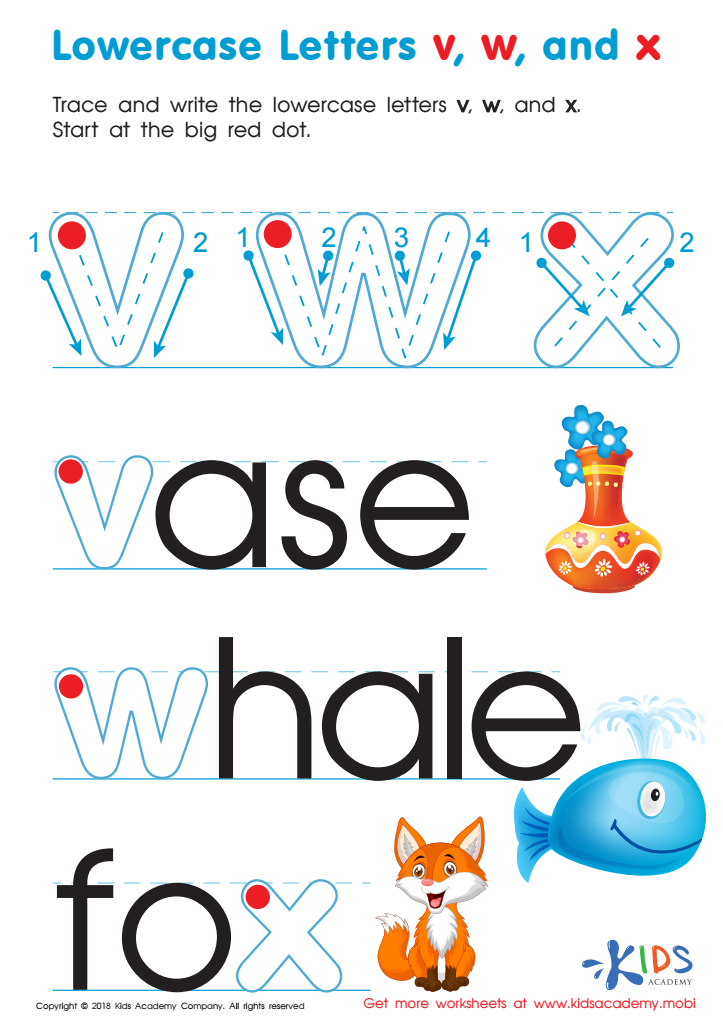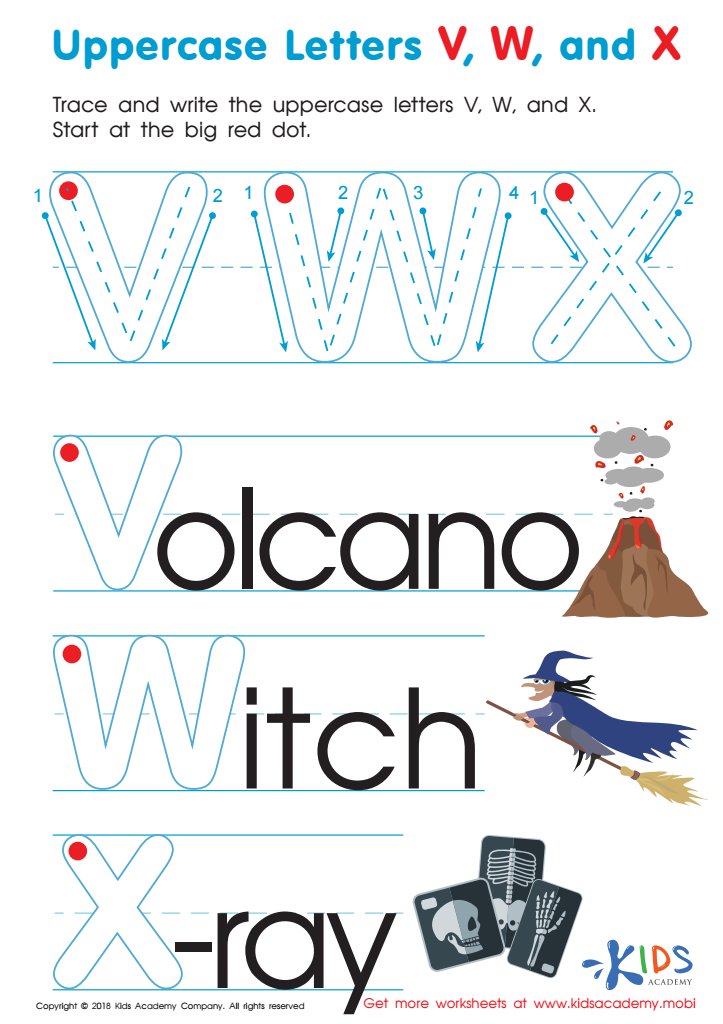Upper & Lowercase Letters Worksheets for Ages 3-6 - Page 3
50 filtered results
-
From - To


Lowercase Letters v w x Worksheet


Uppercase Letters V, W, and X Worksheet
Understanding uppercase and lowercase letters is foundational for children aged 3-6, as it sets the stage for literacy development. At this age, children are forming crucial language skills, and recognizing both types of letters aids in phonics and word formation. Uppercase letters are commonly used for the beginning of sentences and proper nouns, while lowercase letters make up the majority of text they encounter. By teaching both, parents and teachers equip children with the tools they need to read and write proficiently.
Additionally, being aware of this distinction helps children navigate the written world more easily, fostering confidence in their reading abilities. Recognizing uppercase and lowercase letters also prepares children for structured learning, as they will later need to master grammar rules that govern their use.
Moreover, games and activities that involve different letters can enhance fine motor skills, critical thinking, and memory. Creating a fun and engaging environment around letter recognition can also skyrocket a child’s enthusiasm for learning. Therefore, incorporating sensitive instruction around uppercase and lowercase letters is vital, making literacy enjoyable and accessible, ultimately paving the way for successful communicators in the future. Parents and teachers should prioritize this element of early education to enable comprehensive language acquisition.
 Assign to My Students
Assign to My Students













